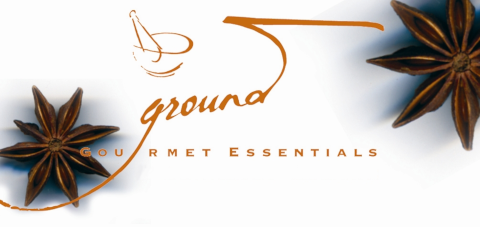[Recipe: Chilled lettuce, pea & basil soup]
He told me to meet him by the big gum tree, just across the road from the pony school. Although he didn’t say so, it was clear he wanted me to come alone – not to tell anyone. I’d been waiting for 5 minutes before he finally showed up. His van drew up behind mine and he got out and gestured for me to come over. As I got closer, I could smell the unmistakeable pungent, clove and anise aroma. Sweet, sweet, peppery basil. In the back of his van was a mountain of big, bright green bunches of the stuff. I could have swum in it!

The rather clandestine meeting with my herb supplier was actually a matter of convenience. He was on his way to make deliveries and it was easier for me to meet him somewhere en-route to pick up my order. I was after a few kilos to make a fresh batch of Ground’s popular basil pesto. The quality of the ingredients is really important for a good pesto and now is the best time of year for good quality fresh basil.
Because fresh sweet basil is such a quintessential part of summer Italian food it is easy to forget how important it is in other cuisines. It actually originated in India and Iran, yet its name is Greek meaning “king” (of herbs). Still, it is Italian flavours and tomatoes, in particular, that sweet basil goes so well with. My favourite salad combines garden-fresh tomatoes and basil leaves with fresh bocconcini in a combination that is summer on a plate. This colourful combination is also fantastic on good crusty bread, with a dash of black pepper and drizzled with a good quality New Zealand olive oil – the pepperier the better!
Sweet basil also lifts cooked dishes that have tomatoes, eggplant or fennel as a main ingredient. Tear it up and add it just before you serve, as basil loses its flavour if it is cooked for too long. Try throwing a generous scattering of leaves into sautéd courgettes or scallopini toward the end of their cooking. Make sure you tear the leaves rather than cut them, as basil bruises easily and the bruising can affect the flavour. And, of course, basil leaves can be used in place of oregano to dress your pizza before baking it.
Deep-fried basil leaves make a great garnish for seafood, or mix a large quantity of basil leaves with good quality extra virgin olive oil and toss through fresh pasta, freshly cooked peas, or spoon over seafood or meat.
Basil butter is an excellent topping for any cooked tomato dish. Just blend butter, basil and black pepper, roll up into a sausage shape in baking paper, twist the ends to seal and freeze.
You can also use fresh basil for savoury muffins with other ingredients like feta and sundried tomatoes.
If you can’t use all of your fresh basil, bunches will keep quite well in the freezer for a few weeks in a plastic bag. Make sure you leave some air in the bag and put it somewhere in the freezer where it will not get squashed. Alternatively, blend it with a little bit of olive oil and put it in containers in the freezer. That way, you can keep it for a few months.
Here is a delicious soup that is a little different if you are getting tired of salads but still have loads of lettuce left in your fridge. It is easy to do and it’s not too unusual!

Chilled lettuce, pea and basil soup
- 300g fresh or frozen peas
- 1 large bunch basil - leaves only
- 1 head soft lettuce - core removed and shredded
- 850ml cold vegetable stock
- 200ml pottle creme fraiche
Cook the peas in boiling water for 3 minutes. Drain and cool with cold running water. Put the peas, basil, lettuce, vegetable stock and ¾ of the creme fraiche together in a blender and process until smooth. Do this in two batches if necessary. Season, cover and chill for at least 1 hour before serving. Add a swirl of remaining creme fraiche and serve.

